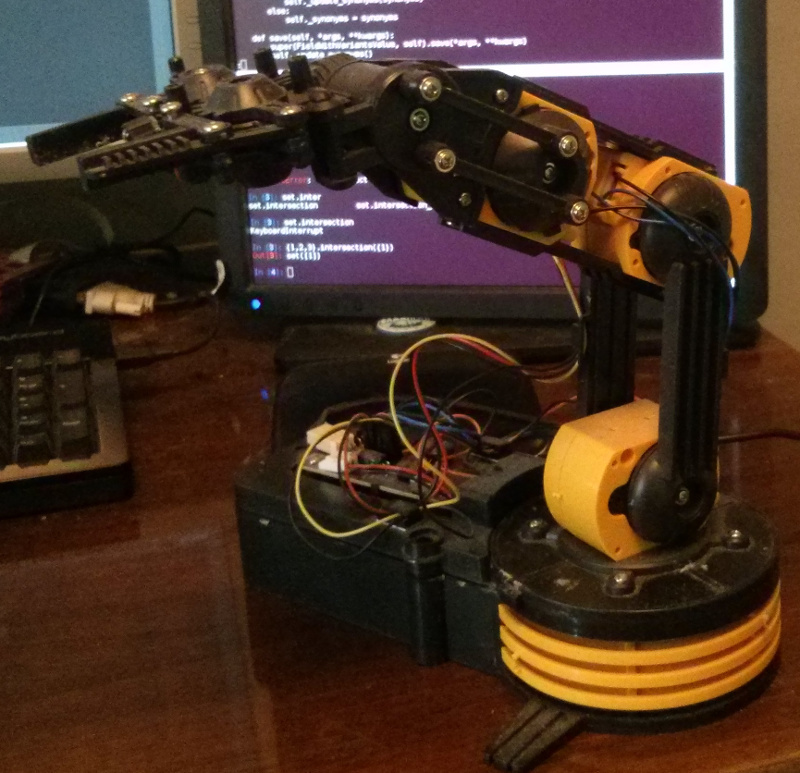Control roboruku using leap motion

Last year, I assembled a roboruku , wrote a “driver” for linux for her, taught me how to hold different objects. And somehow forgot about it. But yesterday I was given a leap motion and I came up with a new idea - to learn how to control a roboruk by means of movements of my hands.
What you need to manage
Roboruki has:
- base - can rotate clockwise and counterclockwise;
- shoulder - move up and down;
- elbow - move up and down;
- wrist - move up and down;
- claws - open and close.
For all this, the "driver" provides a simple api:
from roboarm import Arm arm = Arm() arm.base.rotate_clock(3) arm.elbow.up(1) arm.grips.open(2) First implementation

')
Leap motion can detect hands , fingers and their direction.
Therefore, I decided to tie the movement to the fingers:
| Part roboruki | My hand | Number of fingers | Axis |
|---|---|---|---|
| Base | Right | 4 or 5 | X |
| Shoulder | Left | 4 or 5 | Y |
| Cubit | Right | 2 or 3 | Y |
| Wrist | Any | one | Y |
| Claws | Left | 2 or 3 | X |
Second implementation
Leap motion gives the coordinates of the hands within certain limits, I have about -200 to 200 on X and from 0 to 400 on Y. I divided this area into ten equal parts and attached actions to them:
| Clockwise base | Shoulder up | Elbow up | Wrist up | Open claws |
| Base counterclockwise | Shoulder down | Elbow down | Wrist down | Close claws |
What happened
Video with the result, where roboruka trying to raise the box:
Video, where the movement of the hands can be seen better:
Links
Roboruk owi robotic arm.
Leap motion.
"Driver".
Source code implementation.
Source: https://habr.com/ru/post/214613/
All Articles